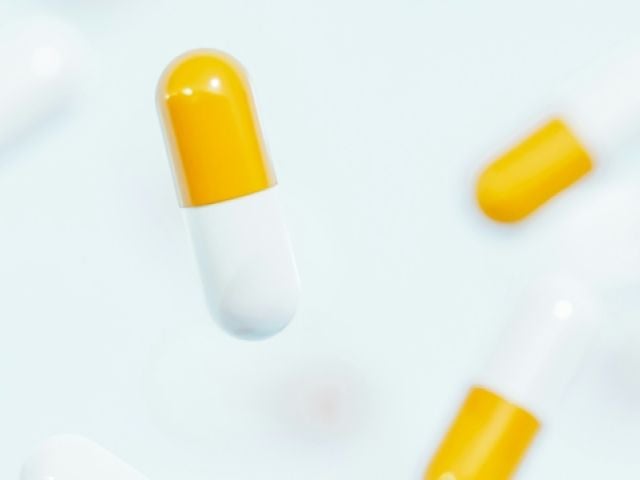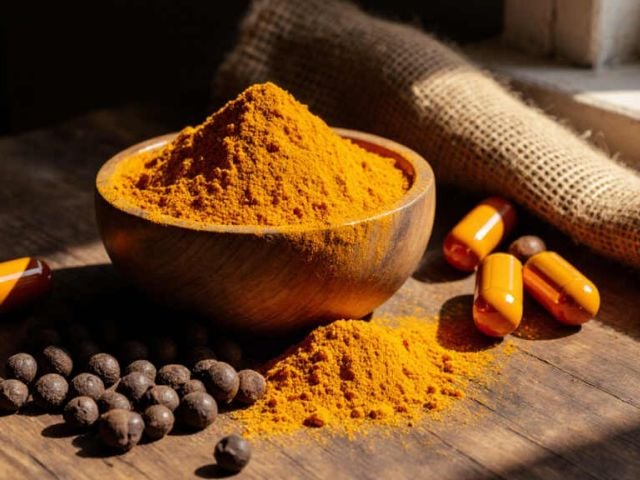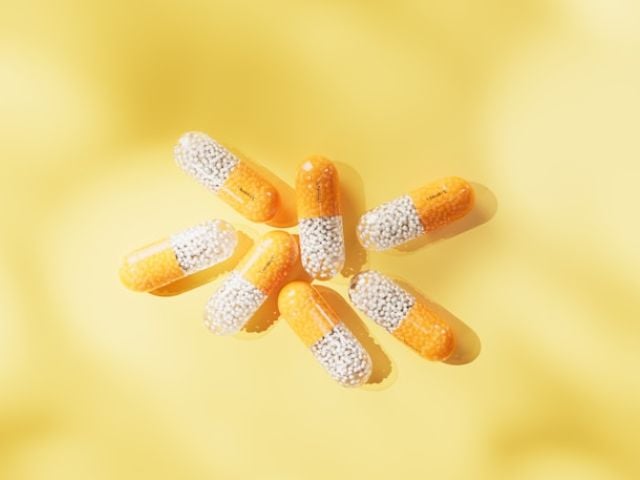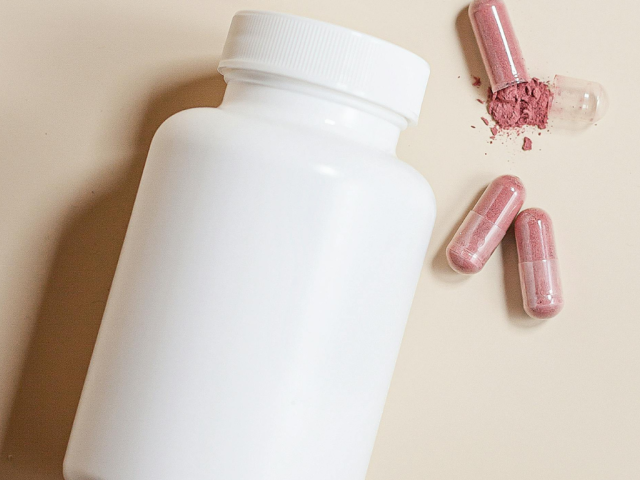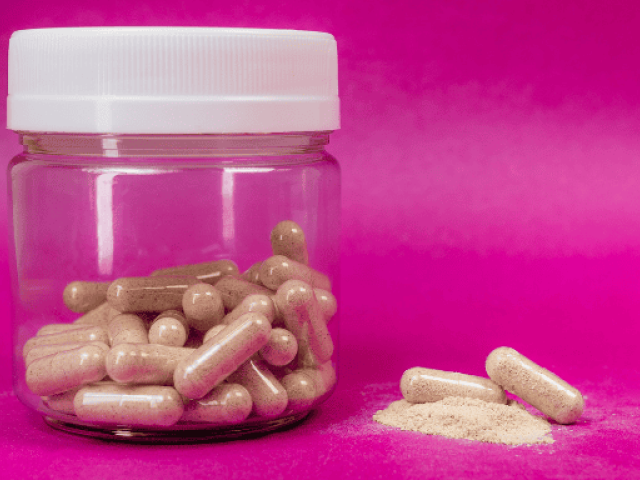
6 Turmeric Benefits for Women: From Fertility to Menopause
Turmeric, the golden spice that colors curry dishes and lattes, offers more than flavor. This ancient root contains curcumin, a compound that may support women’s health through every stage of life. From easing monthly cramps to managing menopausal hot flashes, research shows turmeric may help address hormone-related concerns naturally.
Women face unique health challenges tied to hormonal changes. Periods bring pain and mood swings. Menopause triggers uncomfortable symptoms that can last years.
The active compound curcumin targets inflammation and oxidative stress, two factors that worsen many women’s health issues. While turmeric won’t replace medical treatment, it may complement your health routine when used correctly.
Key Takeaways
- Curcumin in turmeric may help manage PCOS by improving insulin sensitivity and reducing testosterone levels
- Studies show 500-1,000 mg daily can reduce menstrual pain and PMS symptoms within weeks
- Postmenopausal women taking curcumin saw improvements in hot flashes and cardiovascular health markers
What Makes Turmeric Useful for Women’s Health?
Turmeric contains several bioactive compounds called curcuminoids. Curcumin makes up just 3-8% of turmeric powder but delivers most of the health benefits.
This compound works through multiple pathways in your body. It regulates inflammatory signaling molecules like NF-κB and COX-2, which drive period pain and chronic inflammation.
Curcumin’s anti-inflammatory effects compare to non-steroidal anti-inflammatory drugs (NSAIDs) without the same stomach side effects. A 2021 review found that curcumin regulates NF-κB, MAPK, and JAK/STAT signaling pathways1.
The compound also acts as an antioxidant. It scavenges free radicals directly while boosting your body’s own antioxidant enzymes. This dual action protects cells from oxidative stress, which damages eggs, worsens PCOS, and accelerates aging.
Research shows curcumin may influence hormone levels. It can modulate estrogen activity, support progesterone production, and help balance androgens in conditions like PCOS.
Benefit 1: Supporting Fertility and Reproductive Health
Women are born with about 7 million immature eggs. Protecting these eggs from damage matters for fertility throughout your reproductive years.
Before ovulation, eggs undergo development that produces reactive oxygen species (ROS). Too much ROS can damage eggs through oxidative stress, potentially preventing ovulation.
Protecting Egg Quality
Turmeric’s antioxidant properties may shield eggs from oxidative damage. Oocytes can normally protect themselves if ROS levels stay balanced, but overproduction puts them at risk.
In traditional medicine, turmeric is used to increase blood flow to the pelvic area. Better circulation means more nutrients reach your reproductive organs.
New research suggests curcumin may affect telomeres2, the protective caps on DNA that shorten with age. Dr. Laurie Terzo, a functional medicine practitioner, states that curcumin “not only can stop telomeres from shortening, but can also protect and lengthen your telomeres, which is basically turning back your biological clock.”
Important Pregnancy Caution
Culinary amounts of turmeric in food remain safe during pregnancy. Medicinal doses require caution.
Research in mice suggests high-dose curcumin may affect embryo implantation and fetal weight3. Taking large amounts during pregnancy may alter estrogen levels, potentially causing uterine contractions or bleeding.
A 2021 case series found two patients using curcumin supplements had reduced endometrial thickness, disrupting their embryo transfer process4.
Stick to food amounts if you’re pregnant or trying to conceive. Save therapeutic doses for after pregnancy, or discuss with your healthcare provider.
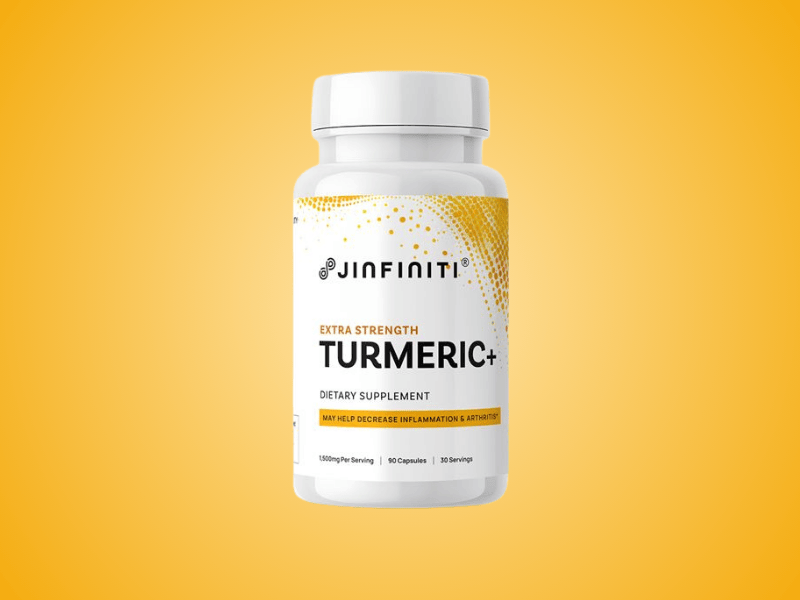
Benefit 2: Managing PCOS Naturally
PCOS affects 6-26% of reproductive-aged women, making it one of the most common endocrine disorders. The condition brings irregular periods, elevated male hormones, insulin resistance, and ovarian dysfunction.
Inflammation and oxidative stress drive PCOS symptoms. This makes turmeric’s anti-inflammatory and antioxidant properties particularly relevant.
Improving Insulin Sensitivity
Insulin resistance affects 50-70% of women with PCOS. It raises androgen production, worsening acne, weight gain, and facial hair.
A 2023 clinical trial found that 12 weeks of curcumin supplementation (1,000 mg daily) reduced fasting blood sugar, fasting insulin, insulin resistance, and testosterone levels compared to placebo5.
Studies using 500-1,500 mg daily show similar benefits. The compound works by modulating glucose metabolism pathways and reducing inflammatory cytokines that interfere with insulin signaling.
Animal studies confirm these findings. Turmeric extract in PCOS mice significantly reduced elevated blood glucose levels6.
Balancing Hormones
Curcumin influences sex hormone levels beyond insulin. The 2023 trial showed reductions in total testosterone and improvements in Sex Hormone Binding Globulin (SHBG).
Treatment normalized luteinizing hormone (LH) levels, which typically run high in PCOS. It also restored progesterone and estrogen levels, confirming its phytoestrogen activity.
Animal studies suggest curcumin may improve ovarian structure. Treated rats showed thickened granulosa cells, healthier oocytes, and increased corpus luteum diameter. One study found results comparable to clomiphene citrate, the first-line PCOS therapy6.
Women with PCOS also saw lipid profile improvements. Turmeric treatment significantly reduced total cholesterol and triglycerides, showing more effectiveness than metformin for normalizing triglycerides.
Understanding your body’s inflammatory status can help track progress.
🧬 Learn more about inflammatory biomarkers and how they reveal health changes.
Benefit 3: Easing Endometriosis Symptoms
Endometriosis affects roughly 10% of reproductive-aged women. The condition causes endometrial-like tissue to grow outside the uterus, triggering chronic pain and infertility.
Elevated inflammatory cytokines, oxidative stress, and excessive tissue growth characterize endometriosis. Curcumin targets each of these mechanisms.
A 2025 trial investigated adding 80 mg nanomicelle curcumin to dienogest, a standard endometriosis treatment7. Results showed significant improvements in pain, sexual function, and quality of life after just 8 weeks.
Researchers observed improvements in dysmenorrhea (period pain), dyspareunia (painful intercourse), chronic pelvic pain, and low back pain. The study demonstrated, for the first time, that curcumin add-on therapy has high effectiveness and safety.
Not all studies show dramatic effects. A 2024 study of 68 women taking 500 mg twice daily found no significant difference in pain or quality of life compared to placebo8.
The mechanisms make sense on paper. Curcumin inhibits endometrial cell growth by reducing estradiol production. It also shows anti-proliferative, anti-angiogenic, and pro-apoptotic effects.
A 2018 review noted that curcumin inhibits the growth of endometrial cells by regulating estrogens and decreasing oxidative stress and inflammatory cytokines9.
More research is needed to clarify which formulations and doses work best for endometriosis pain relief.
🫚 TURMERIC INSIGHTS
- Nerve pain can be debilitating. See how turmeric may help with neuropathy and what dosages show promise in research.
- Supplement shopping gets confusing fast. Learn whether curcumin or turmeric root delivers better results for reducing inflammation.
- These two spices pack more punch together. Find out why ginger and turmeric work better as a pair than separately.
Benefit 4: Relieving PMS and Menstrual Pain
PMS affects 70-90% of women. Symptoms range from bloating and breast tenderness to mood swings and anxiety. Dysmenorrhea (period pain) stems from excessive prostaglandin production.
Curcumin’s COX-2 inhibition directly targets this mechanism. Multiple trials have tested turmeric for menstrual symptoms with encouraging results.
Reducing Monthly Discomfort
A 2025 triple-blind trial of 62 medical students found that 500 mg curcumin daily for 10 days per cycle over two cycles produced significant PMS symptom reduction10. No participants reported adverse effects.
The study also found significant pain score reductions at the second and third menstrual cycles compared to placebo.
A 2022 study measuring oxidative stress found curcumin treatment significantly increased free-radical scavenging activity compared to placebo11. This suggests the antioxidant mechanisms contribute to relief.
Results aren’t universally positive. One 2021 study found curcumin had comparable effects to placebo for PMS symptoms, leading researchers to call for larger samples using higher doses for longer periods.
A systematic review concluded that curcumin supplementation at 500-1,000 mg can help reduce primary dysmenorrhea complaints by inhibiting the COX reaction, reducing inflammation and uterine contractions12.
Some women find relief when combining turmeric with other anti-inflammatory approaches. Our turmeric curcumin supplement includes complementary compounds like quercetin and boswellia for broader anti-inflammatory support.
Supporting Vitamin D Levels
A 2022 study found an unexpected benefit. Curcumin supplementation (500 mg plus 5 mg piperine daily) significantly increased serum vitamin D levels in young women with PMS and dysmenorrhea13.
Median levels rose from 12.8 ng/ml to 16.2 ng/ml. Since vitamin D deficiency links to menstrual problems, this may represent an indirect mechanism of benefit.
The connection between inflammation and hormones runs deep. Reducing inflammatory stress through curcumin may help balance the delicate interplay between your immune system and reproductive hormones.
Benefit 5: Managing Menopause Symptoms
As women transition through perimenopause into menopause, declining estrogen triggers multiple changes. Hot flashes, cardiovascular risk, and bone loss all increase.
Inflammation also rises during this transition. Turmeric may offer relief for several menopausal symptoms.
Hot Flashes and Night Sweats
Hot flashes affect up to 80% of menopausal women. These vasomotor symptoms significantly impact quality of life and sleep.
A 2020 trial compared oral curcumin (500 mg twice daily) versus vitamin E versus placebo for 8 weeks in 93 postmenopausal women14. Results showed both curcumin and vitamin E significantly reduced hot flashes.
The curcumin group experienced a mean reduction of 10.7 hot flashes compared to placebo. The first significant effect appeared after four weeks, faster than vitamin E’s eight-week timeline.
A 2022 follow-up study confirmed these findings, reporting improvements in hot flash frequency and severity with curcumin treatment.
Neither study found significant effects on sexual function or overall menopausal symptoms beyond hot flashes. Still, reducing hot flashes alone can dramatically improve daily comfort.
Women experiencing menopause often notice declining energy alongside hormonal changes. Supporting cellular energy production becomes important during this transition.
🧬 Learn how NAD levels decline with age and what that means for menopausal health.
Protecting Heart Health
Cardiovascular disease risk escalates during menopause. Declining estrogen affects vascular endothelial function, arterial stiffness, and vascular remodeling.
A 2024 systematic review concluded that curcumin has beneficial effects on vascular function during menopause by addressing endothelial function, arterial compliance, and hemodynamic parameters15.
Curcumin supplementation improved flow-mediated dilation (FMD), a gold-standard measure of endothelial function. One study found 8 weeks of curcumin (150 mg daily) produced FMD improvements comparable to regular aerobic exercise16.
Blood pressure benefits appeared across multiple studies. Curcumin reduced brachial and carotid systolic blood pressure. When combined with exercise, it successfully reduced aortic, carotid, and brachial blood pressure.
The mechanisms involve increasing nitric oxide bioavailability and reducing vascular oxidative stress. Nitric oxide helps blood vessels dilate and acts as an anti-atherosclerotic agent.
These cardiovascular benefits matter. Heart disease becomes the leading cause of death for women after menopause, making prevention strategies important.
Supporting Bone Strength
Postmenopausal osteoporosis affects millions as declining estrogen accelerates bone loss. Estrogen deficiency increases osteoclast activity (bone breakdown) while suppressing osteoblasts (bone formation).
Curcumin shows promise through multiple mechanisms. It inhibits osteoclast formation and may improve bone mineral density by reducing nitric oxide and free radicals, inhibiting inflammatory cytokines, and blocking NF-κB.
Clinical evidence shows mixed results. A 12-month study found nanomicelle curcumin combined with alendronate (a standard osteoporosis drug) significantly increased bone mineral density at multiple sites compared to the drug alone17.
Another 2024 study found that 80 mg nanomicelle curcumin daily for 6 months did not significantly improve bone density when used alone18.
Animal studies show more consistent benefits. Research in ovariectomized rats showed curcumin treatment increased femur, tibia, and total bone mineral density while decreasing bone loss markers.
The evidence suggests curcumin may work best for bone health when combined with standard treatments rather than used alone.
🧬 Cellular health forms the foundation for healthy aging. Discover more about supplements that support cellular repair during menopause and beyond.
Benefit 6: Balancing Hormones Naturally
Hormonal imbalance can occur at any life stage. Excess estrogen relative to progesterone contributes to heavy periods, endometriosis, fibroids, and severe PMS.
Turmeric supports hormone balance through liver detoxification and direct hormone modulation.
Liver Support
Your liver breaks down and eliminates excess estrogen through a two-phase detoxification process. When this system works poorly, hormones accumulate.
Curcumin supports phase 2 liver detoxification, helping remove unneeded hormones and toxins. It may even regenerate liver cells.
“Turmeric’s liver-supporting properties mean that it can play a functional role in moderating hormone imbalance through this mechanism,” explains Wild Nutrition.
This becomes relevant for estrogen dominance conditions. Supporting healthy liver function helps your body process and eliminate excess hormones naturally.
Beyond hormones, your liver processes countless substances daily. Maintaining liver function becomes increasingly important as environmental toxin exposure rises and we age.
Estrogen Modulation
Turmeric’s relationship with estrogen is complex and context-dependent. Some sources classify it as a phytoestrogen with estrogen-like effects. Research shows it can modulate estrogen activity in both directions.
Curcumin may suppress overactive estrogen pathways in conditions like PCOS, estrogen dominance, and perimenopause. It doesn’t directly boost estrogen levels like soy or flax. Instead, it supports balanced estrogen activity.
In low-estrogen states, curcumin may support hormone production indirectly by helping adrenal and thyroid function, which affects estrogen production.
This bidirectional modulation makes curcumin potentially helpful across different hormonal states. It dampens excessive estrogen while supporting optimal levels where needed.
The thyroid also influences hormone balance throughout your body. Thyroid dysfunction can worsen menstrual irregularities and menopausal symptoms, making whole-body hormonal support important.
Join Our 50,000+ Health Community
Access research-backed health optimization strategies used by longevity experts. Weekly insights, exclusive discounts, member pricing.
How to Use Turmeric Safely and Effectively
Clinical studies show wide dosage ranges depending on the condition and formulation used. Here are some research-backed tips for how to take turmeric.
Recommended Dosages
Research on women’s health outcomes has used varying amounts:
| Condition | Typical Dose | Duration |
|---|---|---|
| PCOS | 500-1,500 mg daily | 8-12 weeks |
| Hot flashes | 500 mg twice daily | 8 weeks |
| PMS and dysmenorrhea | 500 mg daily | 2-3 cycles |
| Endometriosis | 80-1,000 mg daily | 8 weeks |
| Bone health | 80 mg nanomicelle | 6-12 months |
The World Health Organization recommends 0-3 mg per kilogram of body weight as acceptable daily intake. For a 154-pound woman, this translates to 0-210 mg daily, much lower than therapeutic doses.
Cleveland Clinic recommends 500-1,000 mg daily for general use, noting it’s safe to take up to 8 grams per day. Discuss therapeutic doses with your healthcare provider.
Average Indian diets provide 2-2.5 grams of turmeric daily (about 60-100 mg curcumin) through curry and other dishes. This food-based amount supports general health but provides lower concentrations than supplements.
Enhancing Absorption
Some strategies overcome curcumin’s poor bioavailability:
Add Black Pepper: Just 1/20 teaspoon of black pepper with turmeric can increase absorption by inhibiting liver metabolism. Most commercial supplements include 5 mg piperine with 500 mg curcumin.
Take With Healthy Fats: Since curcumin dissolves in fat, consuming it with oils, avocado, nuts, or seeds significantly improves absorption.
Dietary Sources: You can also incorporate turmeric through:
- Curry dishes and curry powder
- Golden milk or turmeric lattes
- Turmeric tea made with fresh or powdered root
- Direct addition to rice, beans, soups, and vegetables
A 2023 observational study of 4,551 adults found regular curry consumption was associated with reduced mortality risk and increased life expectancy19. Moderate consumption showed a 30-46% reduction in mortality risk.
🧬 Learn more about why quercetin with bromelain works through similar absorption-enhancing principles.
Safety Considerations
Turmeric is “generally recognized as safe” (GRAS) by the FDA as a food ingredient. Clinical trials using up to 12 grams daily show curcumin is well tolerated, though side effects can occur.
Common Side Effects: In rare cases, turmeric may cause:
- Nausea or upset stomach
- Diarrhea
- Dizziness
- Skin reactions after topical contact
Important Contraindications:
Turmeric acts as a natural anticoagulant. It can increase bleeding risk when combined with blood thinners including warfarin, heparin, aspirin, clopidogrel (Plavix), ibuprofen, and naproxen. Stop curcumin supplements at least 2 weeks before planned surgery.
Since curcumin lowers blood sugar, combining it with diabetes medications can cause dangerously low blood sugar. This leads to shakiness, anxiety, blurred vision, and cognitive problems.
Turmeric increases stomach acid production. Taking it with acid-reducing medications like omeprazole or famotidine may cause nausea, bloating, stomach pain, and esophageal damage.
Who Should Avoid Supplements:
- People with bleeding disorders
- Those with gallbladder problems (may worsen gallstones)
- Pregnant women (medicinal quantities)
- People with iron deficiency anemia (turmeric can impede iron absorption)
For women with hormone-receptor-positive breast cancer, the relationship between turmeric and estrogen requires careful consideration. While some research suggests curcumin may help reduce breast cancer risk, large amounts may interfere with estrogen-related medications. Consult your oncologist before using supplements.
Understanding your body’s inflammatory status helps you track whether interventions are working. Many chronic health issues in women stem from chronic inflammation that builds over time.
Bottom Line
Turmeric offers women science-backed support across multiple life stages. The compound curcumin targets inflammation and oxidative stress, two underlying factors in many hormone-related conditions. Research shows it may help manage PCOS, reduce menstrual pain, ease menopausal hot flashes, and protect cardiovascular health after menopause.
Results vary by individual, formulation, and dosage. Enhanced bioavailability forms with black pepper or liposomal delivery work better than plain turmeric powder. While promising, turmeric supplements work best alongside proper nutrition, stress management, and medical care.
Discuss therapeutic doses with your healthcare provider, especially if you take medications or have health conditions. The golden spice won’t cure hormonal issues, but it may offer meaningful support when used correctly.
Referenced Sources
- https://pmc.ncbi.nlm.nih.gov/articles/PMC8572027/ ↩︎
- https://link.springer.com/article/10.1007/s11357-024-01092-5 ↩︎
- https://www.mdpi.com/1422-0067/11/8/2839 ↩︎
- https://pmc.ncbi.nlm.nih.gov/articles/PMC8754353/ ↩︎
- https://bmcendocrdisord.biomedcentral.com/articles/10.1186/s12902-023-01295-5 ↩︎
- https://pmc.ncbi.nlm.nih.gov/articles/PMC8717583/ ↩︎
- https://www.sciencedirect.com/science/article/abs/pii/S0944711325003551 ↩︎
- https://pubmed.ncbi.nlm.nih.gov/37818734/ ↩︎
- https://www.sciencedirect.com/science/article/abs/pii/S0753332217346838 ↩︎
- https://pmc.ncbi.nlm.nih.gov/articles/PMC12269146/ ↩︎
- https://cmj.ac.kr/DOIx.php?id=10.4068/cmj.2024.60.2.113 ↩︎
- https://pmc.ncbi.nlm.nih.gov/articles/PMC10973707/ ↩︎
- https://bmccomplementalternmed.biomedcentral.com/articles/10.1186/s12906-022-03515-2 ↩︎
- https://pubmed.ncbi.nlm.nih.gov/31987231/ ↩︎
- https://pmc.ncbi.nlm.nih.gov/articles/PMC11504472/ ↩︎
- https://www.sciencedirect.com/science/article/abs/pii/S0271531712001844 ↩︎
- https://www.frontiersin.org/journals/pharmacology/articles/10.3389/fphar.2024.1446536/full ↩︎
- https://www.sciencedirect.com/science/article/pii/S2212958824000284 ↩︎
- https://pmc.ncbi.nlm.nih.gov/articles/PMC10828228/ ↩︎

Get weekly health insights and exclusive offers by joining our newsletter.

